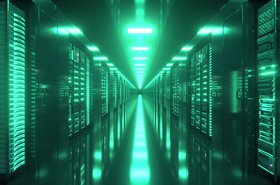In a world marked by unprecedented digitalization and information exchange, data centers, the central nervous system of the digital world, have acquired enormous importance. The landscape of the data center industry will demand innovative security strategies and access controls to safeguard the heart of global digital infrastructure.
What is your take on the evolution of security threats for data center facilities?
Each year we are faced with new hurdles that need to be taken into heavy consideration. We are, unfortunately, living in a modern world where breaches can be made by using the right tools available on the internet for a small fee.
It is safe to say that security should be our highest priority, although many businesses do not share this sense of importance.
It would be in a business’s best interest to have at least yearly audits that can help identify any gaps in their procedures or equipment, as well as staff’s response time to each concern/alarm and events. While it is hard to prevent every single event from happening, this would severely help minimize exposure to attackers.
What do you think about the opportunities and threats that AI and automation will represent to security systems?
While there may be some downsides to the proliferation of AI, there are some advantages to having this available today. For example, faster response times to incidents may be something worthwhile. Identifying potential threats in a short period of time can help mitigate risks. There are more intelligent systems that exist today which can help with monitoring.
The downside could be that at some point it could eliminate the need for guards to perform safety tours. This would impact the need for bodies at sites that perform this duty today. While not ideal for the longevity of certain job roles, it can reduce the need for operations expense year after year for staffing and increase the percentage of incidents captured.
How do you think modern architecture complements physical security within facilities, are there any major trends to look out for?
More and more data centers are going the way of creating vestibules with mantrap designs as well as intercom verifications which help monitor traffic entering and exiting the sites. As designs have changed in as recently as the last ten years, security has been placed in the center of discussion when it comes to planning and designing.
I’ve personally seen sites that had security trays hidden which were near impossible to reach, where today they are more accessible and easier to pull cabling through. Other features that are included in today’s designs are placement of equipment and securing the systems that help maintain the site. Location is key for this matter.
The principle of multi-factor authentication is also something that helps largely, as well as the process of having to go through several layers before getting into the core of a facility, and it is something that is taken into a larger consideration.
How do you see biometrics and access authentication systems evolving in a world where remote work is growing every day? Are we looking into a more integrated future in terms of physical and digital security?
It is understandable that the recent pandemic the world faced identified just how many roles could perform their work in a remote setting, but even with this being the case I do not see that access controls being impacted by this.
The purpose of security systems is to help deter and identify individuals as well as incidents and try to prevent intrusions from occurring.
In a world where technology advances every year, the systems being implemented at any site would also need to keep up to protect businesses not just from an attack on the business itself, but also the people working at these institutions.
We have seen different companies adapt fingerprint scanners as well as retina scans to identify individuals for access authentication. I feel that as time goes on this will only increase as there are tools that can be used today to falsify something as simple as a badge swipe.
In the long run I see cloud deployments for physical security systems such as video retention which would suffice largely for data centers looking to have SOC1/2 compliance.
Within the next decade, how do you see the evolution of the regulatory landscape? Are we reaching a balance on security and privacy?
This will most likely be defined to businesses as how they can and cannot perform certain tasks. Any tools, methods or processes used today to reach a specific goal may not be easily used in the future.
This will narrow down possible outcomes or address any hurdles you may come across while working on a project. It will impact vendors in the length of time they take to complete a job if certain methods are not allowed.
Regarding the balance of security and privacy, currently there is no privacy law within the US but that’s not to say there won’t be in the future. As they are both equally important, I do not believe we are reaching a solid balance between the two, and if we have it is most likely a very delicate one. The digital age has made privacy a very important and yet hard task to complete, so in order to see this through we have to design a system that allows for both.
Final word
Axys is thrilled to announce that this year the company is launching its security division: Access Controls, CCTV and Communications & Audio, ensuring complete building management systems for data centers safeguarding valuable information, protecting critical infrastructure, and bolstering business continuity. As the volume of sensitive data stored and processed in data centers continues to rise, the importance of robust security measures within their facilities cannot be overstated.
To find out more you visit www.axys.global and follow Axys on LinkedIn here.


